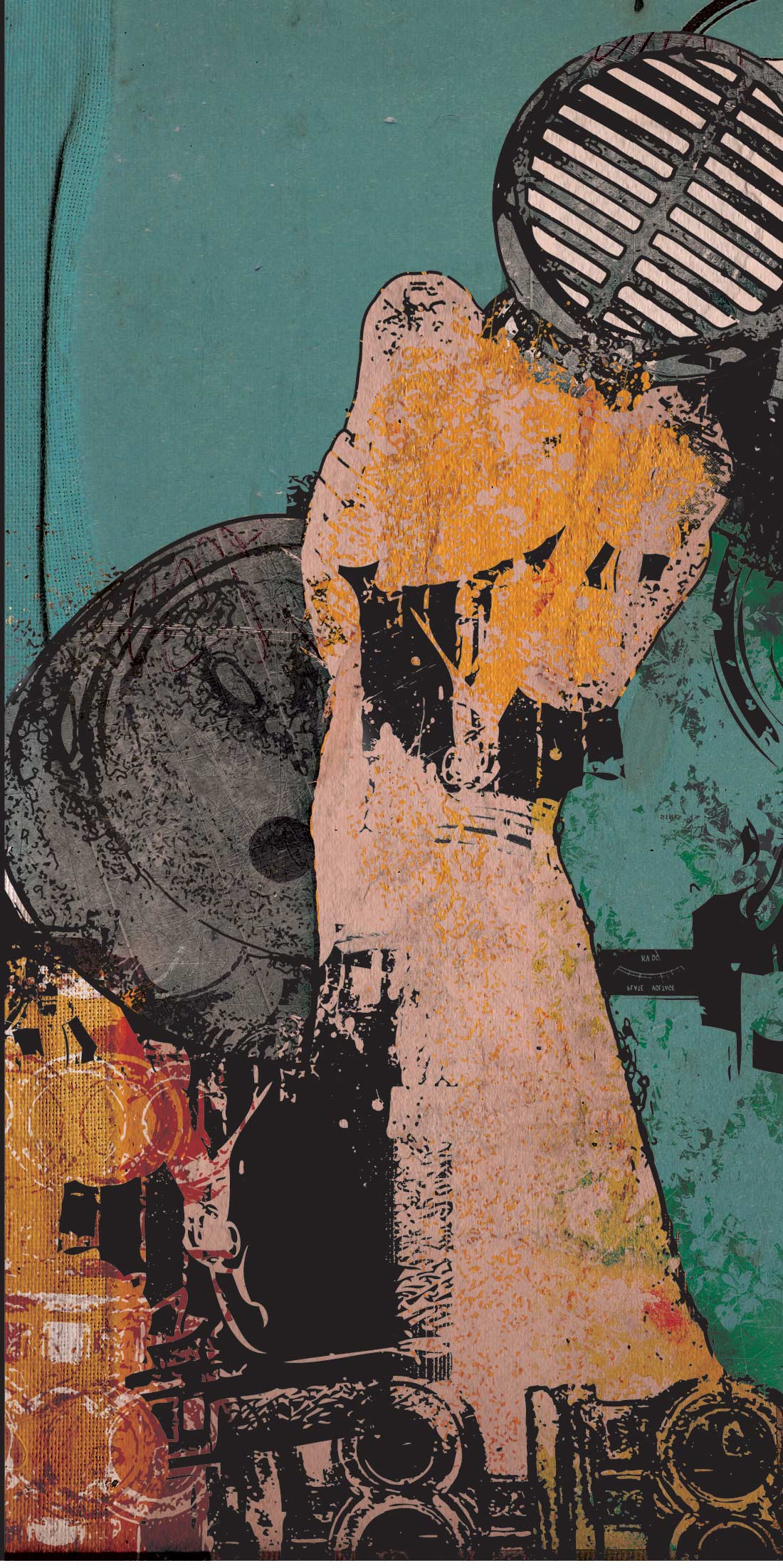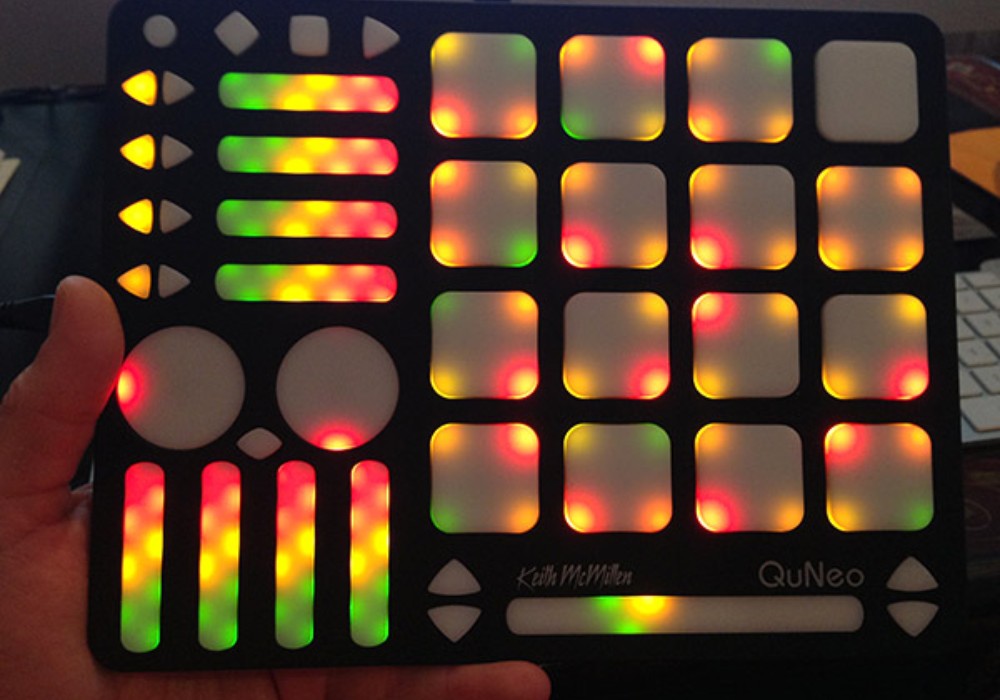A number of years back, I was tracking a record in a room with a 24-fader Digidesign ProControl and then migrated to a situation with only a keyboard and a mouse. About halfway through the first day without the ProControl, I turned to my esteemed colleagues and said, "Man, I wish I had just one fucking fader!" Frustration, it appears, is the real mother of invention, and we all lit up, wondering why this seemingly obvious piece of kit wasn't available. Everyone I shared the idea with said it was a brilliant idea and that I should pursue it. The product name One Fucking Fader was, of course, a marketing rocketship just waiting for ignition, though I soon cooled my jets and settled on The Monorail. In all truth, I did pursue patenting The Monorail, a name I still hold the rights to, only to learn a lot about inventing and patent law, including some nonsense about "not a novel assemblage of prior technologies," and "it is not recommended that applicant pursue patent." I was actually relieved. It's an unthinkable load of time, talent, and treasure to manage just an idea for a product, and I have since developed a really deep respect and gratitude for all the designers and manufacturers of the gear we all use everyday making records.
I felt vindicated when PreSonus released their single-fader control surface, the FaderPort (Tape Op #59), and doubly so when Frontier Design Group followed up with their AlphaTrack. I tried the PreSonus out and was kind of bummed, to be honest. It wasn't very sleek, it required a wall wart, the name wasn't that cool, there wasn't a display to indicate which track or parameter was selected, and the buttons were kind of hard to push. When the AlphaTrack showed up on the market, I was pleased to find that it looked pretty mod (think Star Trek), was powered via its USB connection, and included a handsome blue LCD display. The name? Well, that's really not all that important.
AlphaTrack includes a 100 mm, touch-sensitive, motorized fader with true 10-bit resolution and three touch-sensitive encoders that provide quick control of pans, sends, EQ, plug-ins, and automation. The 32-character backlit display shows info about what you're doing with the encoders, and it's a huge advantage because there are so many parameters available for control, and most can be swapped with the fader, too. At the bottom is a touch-sensitive jog and shuttle strip-something like a narrow track-pad you'd find on a laptop. The strip allows you to scroll through a project's timeline, vary shuttle speed, and navigate through markers. It takes a minute to learn the commands (a combination of one and two finger moves), but once I did, using the shuttle strip was quite intuitive. AlphaTrack has 22 buttons and 21 LEDs, including transport controls, track record, solo and mute buttons, and automation-mode indicators. On the back is a footswitch jack for punching-in, a sweet feature when recording yourself.
AlphaTrack connects to your computer with a USB cable, requires that you install a small program to get it running, and that you make it known in your DAW. It works on both Windows and Mac OS X, though I've only installed the driver on a Mac Pro and run the device with Pro Tools. It was fast and easy to have it up and running, and as soon as I did, I was writing vocal automation with a fader within minutes. I finally had my one f'n fader.
Working with AlphaTrack is really fun, intuitive, simple, and effective. For me, it's been a liberating tool for writing automation while mixing in the box, especially across a lead vocal track. Compared to using a mouse, I'm not only able to get the intuitive feel of a fader, but I can turn off the damn screen! I have a hot corner on my monitor that turns on my favorite lava-lamp-esque screensaver, and I toss the cursor in that corner whenever I can. On an average day of mixing with the AlphaTrack, I'd say that the screen saver is on about 30% more of the time, maybe more. That's huge. I love Pro Tools, but if I never look at it again, I'll be okay. If you're like me, something different happens when visually disconnected from a DAW's interface. I can literally feel a different part of my brain begin to work-the listening part. It's the way I feel when I work on tape, and I love it. It's also why many of us close our eyes when we taste something delicious-to heighten one sensation by cutting out another. Writing automation in touch mode with the AlphaTrack allows me to use the transport controls and the shuttle strip to flexibly navigate my session with my screensaver on, and use the fader-and my ears-to do my rides. Awesome!
Of course, there's a whole lot more you can do with the AlphaTrack, and each user will find a way to make it suit the demands of her or his situation. It's quite adaptable and assignable. By the way, in Pro Tools, the AlphaTrack operates in HUI emulation mode. For many other applications (SONAR, Digital Performer, Logic, GarageBand, Adobe Audition, Cubase, Nuendo, Reason) it uses a native protocol mode via a custom control-surface plug-in. Some other apps (REAPER, Tracktion) have native protocol support directly within the app. And a few (Ableton Live, Final Cut Pro, SoundTrack Pro) utilize special Mackie Control emulation modes.
Having designed The Monorail to some degree, I have some ideas to throw out into the creative ether. The AlphaTrack isn't dinky and might be a bit big for use on an airplane tray table, for example. What about a low profile and very narrow version with fewer controls for ultra-portability and elegance? Make those daisy-chainable (snap them together like Legos), and build a modular control surface that grows with your needs. I also envision a version that would mount in either a 60 mm or 100 mm console frame. Drop that in next to the master fader, and have a DAW-integrated fader right in your board. Daisy-chain those with a jumper cable, and build out as needed (I envision these in the sometimes unused space beneath a patchbay, perhaps). Gear makers, I'm ready to be vindicated again.
In the meantime, I aggressively advocate the AlphaTrack to anyone working without a control surface, especially if you don't have room for a multi-fader surface. At $200 street, it's a steal.
($249 MSRP; www.frontierdesign.com)
Tape Op is a bi-monthly magazine devoted to the art of record making.





_disp_horizontal_bw.jpg)